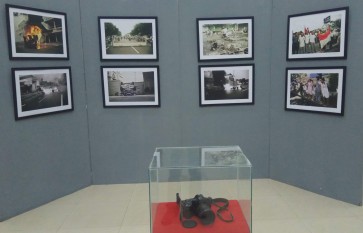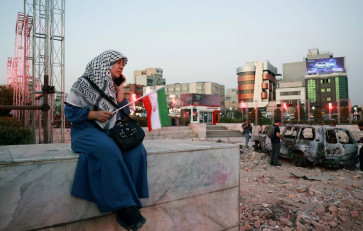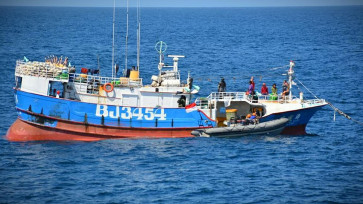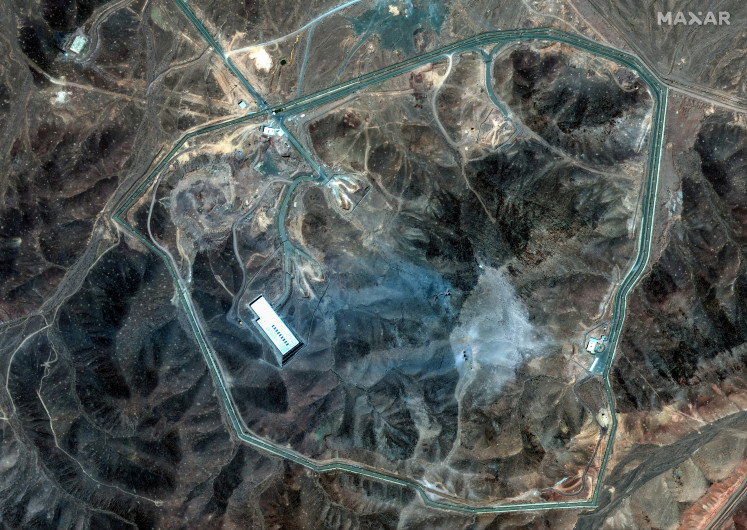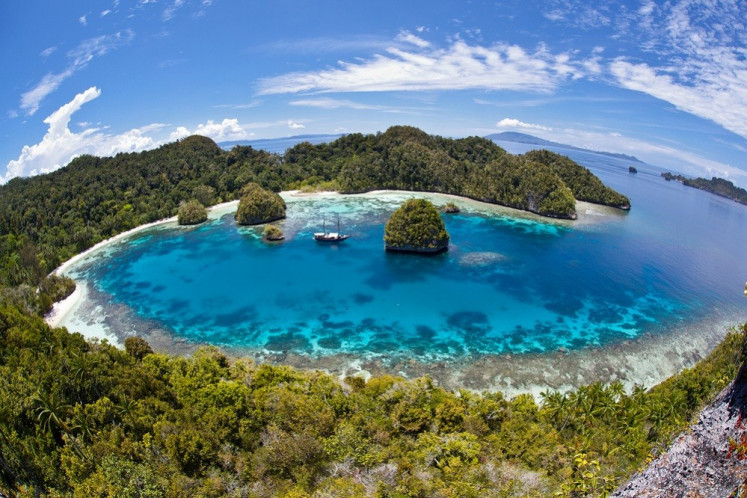Popular Reads
Top Results
Can't find what you're looking for?
View all search resultsPopular Reads
Top Results
Can't find what you're looking for?
View all search resultsRawagede: Survivors recount 1947 attack
Rice fields sprawl along the way to the Rawagede massacre monument, a quadrilateral-cone-shaped structure that marks the tragedy that occurred following the nation’s 1945 Proclamation of Independence
Change text size
Gift Premium Articles
to Anyone

R
ice fields sprawl along the way to the Rawagede massacre monument, a quadrilateral-cone-shaped structure that marks the tragedy that occurred following the nation’s 1945 Proclamation of Independence.
Steps at the front of the monument’s gate lead directly to a statue of a crying widow holding two children with downcast faces. The statue symbolizes the agony of those who were massacred by Dutch colonial forces on Dec. 9, 1947 in Rawagede village, East Jakarta. It is estimated that between 150 and 430 men died in the attack.
Eighty-four-year-old Cawi, one of the survivors, lived in a house just six meters away from the monument. She recalled the atrocity that made her a widow. “It was dawn, when everybody was sleeping, suddenly, ‘taar!’ ‘taar!’ the blaring sound of rifles came,” she said.
Cawi told The Jakarta Post recently that she had no idea of what happened then, though she knew that something bad was happening. She decided to hide in her house, which is located in the eastern part of Rawagede.
“At 6 a.m., tension was rising. Someone told me that it was the Dutch raiding the village in search of resistance leader Lukas Kustario,” she added.
Lukas Kustario, originally from Cianjur West Java, was well known at that time as being involved in attacks on Dutch forces. According to Cawi, some villagers ran to save their lives, most of them failed to escape. They were massacred because they refused to tell the soldiers Lukas’ whereabouts.
Another massacre survivor Satum (79) said that he managed to survive the raid because he constantly ran from area to area within the village. “I was running to the river, I can’t swim, but I held on to someone who helped me escape,” he said in his house at Jl. Manunggal 4, Balongsari village, Karawang regency, West Java.
Satum cried for a moment when he told the Post he was forced to carry dead bodies after the soldiers had slaughtered villagers. “I was scared, I was not strong enough to bury the dead, but there were no other men. We only dug a meter-deep grave for the victims,” he said.
For years, the survivors sought justice. In 2005, 11 widows of Rawagede victims filed a lawsuit against the Dutch government at the Dutch Civil Court in the Hague. The legal process continued until Sept. 14 this year when the court found the Dutch government guilty.
In a landmark ruling, the court said it was “unreasonable” for the Dutch government to argue that the statute of limitations had expired for the 1947 massacre, and ordered that damages be paid to the widows
including Cawi.
However, the Dutch government appealed the ruling, prolonging the legal process further for the remaining eight widows, three of whom have already died.
Commenting on the ruling, Cawi said that she was happy to see the developments in the legal process. She also said that she had no grudge against the Dutch, believing the incident to be part of fate.
Nikolaos van Dam, then Dutch ambassador to Indonesia, attended a memorial service in Rawagede in 2008; the first representative of his government do so.
Cawi said that she met with the Dutch representative during the memorial service. “I told him, ‘Why so silent? Sincerely, I no longer have a grudge against you’,” Cawi said.
In 2009, the Dutch government consulted with Balongsari’s local authorities and decided to contribute development funds by way of reparation for the killings.
In 2010, the Dutch government finally reached an agreement with the Indonesian Home Ministry to implement the reparations project, which is known as “Integrated development in the Village of Balongsari, Karawang”.
The Home Ministry maintains that technical reasons have hampered the disbursement of assistance funds from the Dutch government to the victims.
Indonesia declared its independence from Dutch colonial rule on Aug. 17, 1945, at the end of World War II. The Netherlands finally recognized Indonesia as independent in 1949 after the former fought to maintain control of its Asian colony.
Some experts and observers have called the Rawagede massacre a war crime or severe human-rights violation. Indonesia has a long list of such crimes and violations including during the Japanese occupation of
Indonesia. (rpt)

